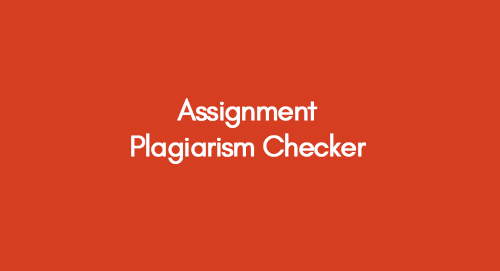
The Rise of Netflix
September 8, 2022
How to Cite Sources to Avoid Plagiarism?
September 9, 2022Introduction
Plagiarism checkers are software tools that help identify whether content has been copied from another source. Although there are a number of different ways to check for plagiarism, these tools typically work by comparing the text in question to a database of other sources, looking for matches.
Review Online Plagiarism Checker for Your Work
Plagiarism is a serious problem, as it can lead to academic dishonesty and potential legal repercussions. As such, it is important to choose a plagiarism checker that is reliable and provides accurate results. There are a number of factors to consider when selecting a plagiarism checker, including the size of the database, the accuracy of the results, and the price. Ultimately, the best plagiarism checker for you will depend on your specific needs and budget. The essay is all about understanding how plagiarism checkers work using technology. We'll look at the fancy stuff like algorithms, methods, and technologies that these tools use to find and stop plagiarism. It's like a map showing readers what they'll learn in the essay.
Free Online Plagiarism Checker For Students
We will email you the report within 24 hours.
Upload your file for free plagiarism

The following paragraph is related to how do plagiarism checkers work.
How Do Plagiarism Checkers Work?
When you submit a paper to a plagiarism checker, the software will scan through billions of documents to find any that are similar to yours. To do this, it will break your paper down into small chunks of text and compare them to other papers in the database. If it finds any matching text, it will flag it as potential plagiarism.
However, just because a paper contains some plagiarized content doesn't necessarily mean that it's been copied wholesale. In many cases, students may simply be unaware of how to properly cite sources, or they may inadvertently include text that is similar to something they've read before. As a result, it's important to review any flagged text carefully before concluding that plagiarism has occurred.
The Mechanism Behind Plagiarism Checkers
The following texts are related to the mechanism behind plagiarism checkers.
Basic Principles of Plagiarism Detection
Talking about the simple ideas behind how plagiarism is found. It's like figuring out if something's copied from somewhere else.
Plagiarism Checkers Scan and Analyze Text
We'll see how plagiarism checkers read through writing and check it carefully to see if there's any copying. It's like they're reading every word to make sure it's original.
Algorithms Used to Identify Similarities and Matches Within the Text
Talking about the special formulas or rules that plagiarism checkers use to spot when one piece of writing looks a lot like another. It's like they have secret codes to catch copying.
Review the benefits of using plagiarism checkers below.
The Benefits of Using a Plagiarism Checker
In today's age of digital information, it's more important than ever to give credit where credit is due. Plagiarism - the act of using someone else's work without giving them credit - is a serious offense that can have serious consequences. Not only is it dishonest, but it can also lead to legal trouble. Fortunately, there are a number of tools available to help you avoid inadvertently plagiarizing someone else's work. One of the most useful is a plagiarism checker.
By entering a piece of text into a Plagiarism Checker, you can quickly see if any part of it matches up with any other text on the internet. This can be an invaluable tool for students, writers, and researchers, who can use it to ensure that they are giving credit where it's due. Plagiarism checkers can also be used to spot plagiarism in others' work so that you can confront them about it and get them to give you the credit you deserve. In short, a plagiarism checker is a valuable tool for anyone who wants to avoid plagiarizing - or being accused of plagiarizing - someone else's work.
The Limitations of Plagiarism Checkers
Plagiarism checkers are a valuable tool for students and educators alike. By entering a text into a plagiarism checker, users can instantly see whether the text contains any plagiarized content. However, plagiarism checkers have several limitations.
- First, they can only search for exact matches, so if a student has paraphrased or slightly modified a source, the plagiarism checker will not be able to detect it.
- Second, plagiarism checkers often have difficulty distinguishing between common phrases and plagiarized content. As a result, they may flag texts as being plagiarized when they are not.
- Finally, plagiarism checkers can be fooled by intentional attempts to trick them. For example, if a student rearranges the order of words in a sentence or replaces some words with synonyms, the checker may not be able to detect the copied content.
- Despite these limitations, plagiarism checkers are still useful tools for preventing academic dishonesty.
The following content is related to the conclusion of the essay.
Conclusion
In conclusion, plagiarism checkers are like smart detectives that help find copied content in writing. They work by using fancy technology to read through documents and compare them to lots of other writing to see if anything's been copied. These tools have cool features like real-time scanning and machine learning, which make them really accurate and fast. With plagiarism checkers, people can make sure their work is original and honest, which is super important in school and work. So, understanding how plagiarism checkers work helps us all become better writers and researchers.
Overall, plagiarism checkers are a valuable tool for preventing academic dishonesty. Although they have some limitations, they can still be useful for spotting copied content. If you are concerned about plagiarism, consider using a plagiarism checker to help you avoid inadvertently committing plagiarism. If you're looking for a plagiarism checker tool to help you avoid committing plagiarism, consider using Premierdissertations.com's plagiarism checker tool.
Get an Immediate Response
Discuss your custom requirements with our writers

























